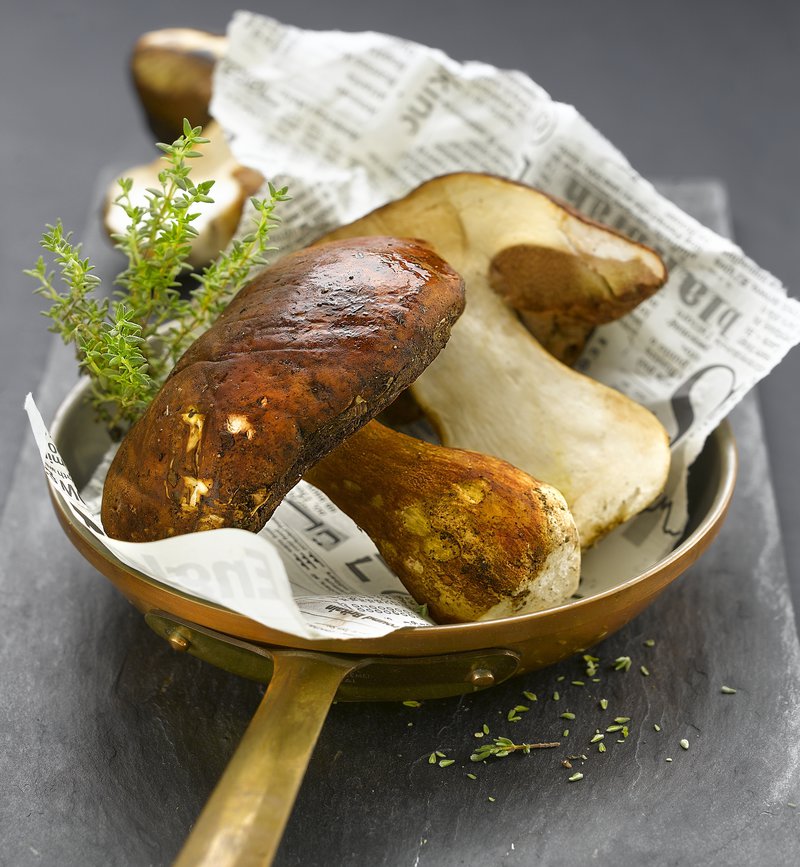basket. TEXT. CUINA. PHOTO. ANA GARCIA FRIGOLA
Mountain treasures
Two wild mushrooms introduced from Italy have taken the world of bolets by storm
Thanks to the efforts of the Italians, in recent years there are a couple of wild mushrooms that have become particular favourites with the general public: Boletus edulis and Boletus pinophilus. More commonly known as the Penny bun, or Porcini, and the Pine bolete, respectively, both mushrooms are rarely found at altitudes of less than 1,000 metres. The mushrooms prefer to grow in mountain woodland made up of Scots pines, Mountain pines and Silver firs, especially if the nearby trees are mature.
Until the 1980s, local knowledge of these magnificent mushrooms had been almost completely absent. However, slowly and gradually, they began to make an appearance in kitchens that had previously only known the more traditional varieties, such as Red pine mushrooms (rovellons), Grey knights (fredolics) and Chanterelles (rossinyols).
Other Mediterranean countries, such as France and Italy, have been consuming these mushrooms for centuries, but local cooks have not wasted any time in catching up with their neighbours and now the use of these mushrooms is widepread here. This progress has been helped by the gastronomic boom of the past few decades, which has seen these mushrooms used in a variety of imaginative ways.
The introduction of these mushrooms has also benefited consumers in other ways. If 15 years ago a kilo of domestic wild mushrooms cost between three and four thousand pesetas (18-24 euros), today a kilo of good quality porcini can be found for around 15 euros, thanks to imports from Romania and Bulgaria.

